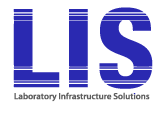Planning a Biosafety Lab? Start With the Flow.
1. Workflow Is a Biosafety Control In high-containment laboratories, safety is not only maintained by walls, filters, or PPE—it also depends on how people, samples, and materials move through the space. Effective biosafety labs are designed around unidirectional workflow, where clean and contaminated zones are clearly separated, and every process supports containment. 2. What Is Unidirectional [...]





